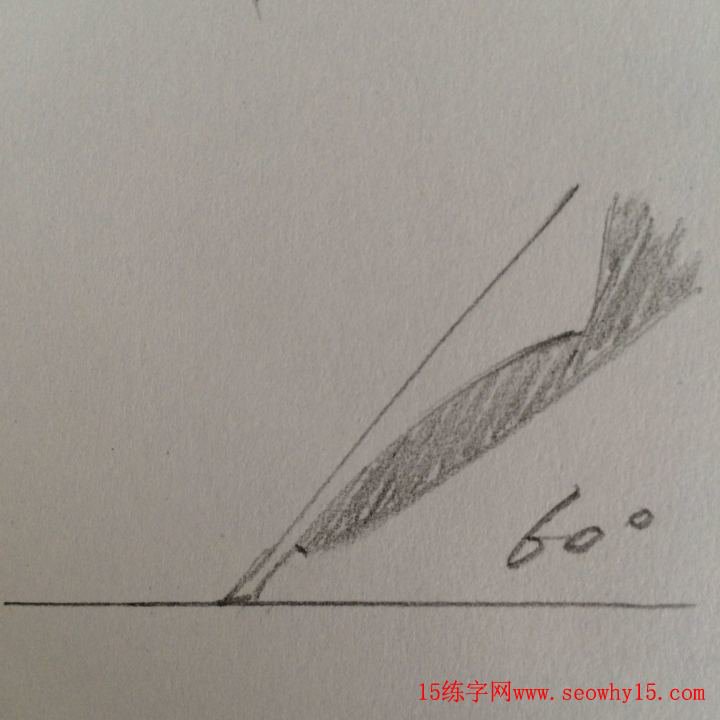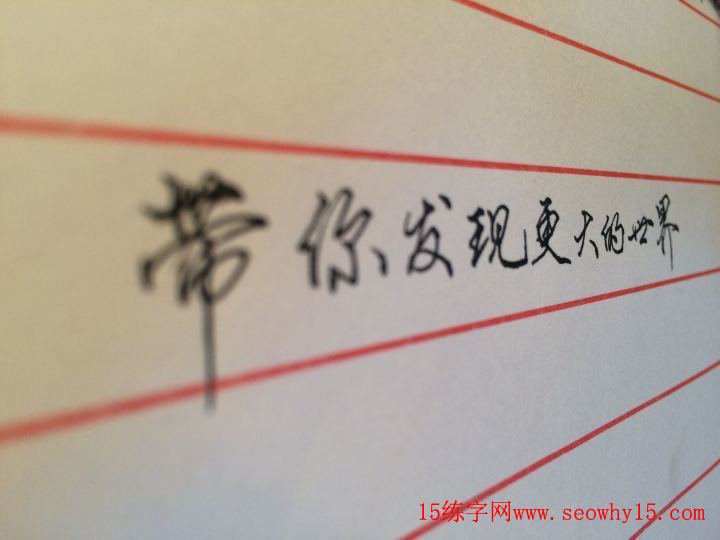How can primary school students practice calligraphy well? I believe that many mothers are anxious, and their children are anxious to hold a pen and write for the first time. However, when they enter the first grade of elementary school, frustration will follow. Why do children always write poorly? Why do you speak so clearly but the children don’t seem to understand? Many mothers will choose to take training classes, which is of course good, but if there are no suitable training classes, how can we help their children write well at home?
1. Master the correct writing and pen-holding postures
"Children can start practicing calligraphy from the first grade of primary school, but they must master the correct writing method. If they don't have the correct method, it is better not to practice.
1. Correct writing effect

What touches the paper is a small side surface (there is no precise data on the angle. It is said that there are 45º, 50º, and 60º. It is roughly within the range of 45º to 60º. You can flexibly control it according to your own comfort level).
The so-called correct way to hold a pen is to maintain as comfortable a posture as possible while maintaining this angle.
In order to achieve this effect, our pen-holding posture should be like this:

The tip of the thumb, index finger and the first joint of the middle finger fix the pen tip, and the ring finger and little finger play a stabilizing role. The pen rests against the base of your index finger.
At this time, the outside of the wrist should be attached to the paper, maintaining a stretched posture. Also be flexible and adjust according to your own comfort.
2. The effect of correct sitting posture
Does your child often do homework like this?

I believe many parents feel deeply about this
Wrong sitting posture can cause two problems:
First, if the eyes are too close to the paper, it is easy to focus on the details of a certain stroke and fail to observe the overall situation.
Second, the right hand blocks the line of sight. In order to observe, the writer's head will unconsciously move significantly to the left. However, this viewing angle does not guarantee the writing effect. for example:

From this perspective, are there no problems with these words? Still has a little fresh breath?
But if you look at it from the front:

Every word is obviously crooked.
Therefore, to ensure the effect, you should pay attention to the following points when writing: place your feet on the ground, keep your upper body straight, and lean forward slightly to observe the layout of the words; keep your head straight to ensure that the angle of your sight does not shift.

Observe the above basic rules, and for the rest, just be comfortable with yourself, without being too rigid.
2. Choose calligraphy with strokes and radicals
"The font that children practice is called standard script, which is close to Song Kai, not calligraphy.
There are many copybooks with standardized words now, and you can choose one according to your child’s situation. There are skills in practicing calligraphy at the beginning. It is not simply copying from the copybook. In summary, there are four key words: rice-character grid, understanding the calligraphy, slow speed, and writing well. "The first and second graders practice mostly basic strokes. The third and fourth graders practice the structure of characters, such as left and right structures, up and down structures, etc. When practicing calligraphy in elementary school, you need to practice basic strokes and radical structures. It is recommended to choose copybooks. It is best to choose one that has an introduction to basic strokes and radical structures. It is best to practice calligraphy for about 20 minutes every day, so the effect will be better.
3. Guidance on writing methods
We parents must be patient when instructing our children to write. Children have poor patience and basically cannot read the structure of characters. We must guide children to see the structure of each character one by one. The improvement of handwriting is not something that happens overnight, but is sustained. Practice is the way to go. Don’t pursue writing more every day, but pursue reading accurately and writing well. Parents' guidance is to help the child walk, but ultimately if the child wants to walk on his own, we must teach him how to fish. Knowing what to look at and knowing how to look at it is this "fishing", and we must pay attention to it. At the beginning of writing, children's interest is very important. Some reward systems can be used to attract children to write well. Parents should pay more attention and provide more guidance to help their children take the first step in writing well.








